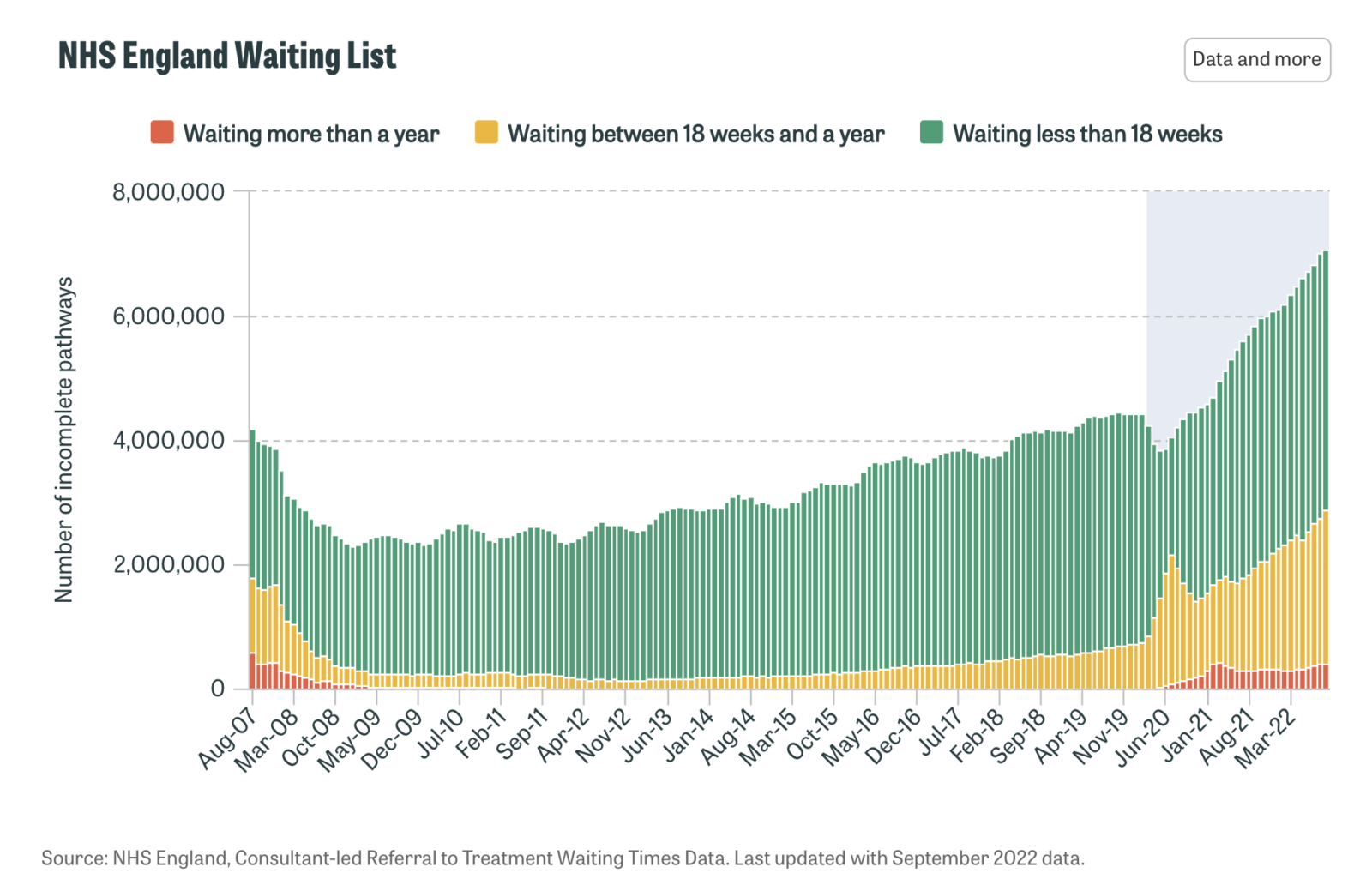It’s no secret that the NHS has an incredibly long waiting list. Limited resources and a growing population put an ever-increasing strain on the organisation, but are wait times improving? Recent data indicates a slight reduction, showing the waiting list has decreased from 7.48 million to 7.46 million in December 2024.
Despite this improvement, concerns remain, especially regarding the exceptionally long wait times for emergency admissions and mental health services. Additionally, a rise in cancer misdiagnosis claims highlights an increasing need for timely and accurate diagnoses.
Keep reading to explore the current state of the NHS waiting lists, the impact on patient care, and ongoing efforts to combat these issues.
Decreasing NHS waitlists
While the waitlist might seem excessive, it’s important to remember that throughout 2024 NHS staff delivered over 18 million treatments. Additionally, December 2024 was the fourth month in a row that saw the waitlist fall. This means that the NHS backlog has decreased from 7.48 million to 7.46 million, while the estimated number of waiting patients has also fallen from 6.28 million to 6.24 million.
While these decreases don’t seem dramatic, they do show slow, sustainable growth towards providing care more quickly and should result in long-term success.
Impact on patient care
Of course, long wait times have led some patients to seek treatment abroad instead. Some individuals with more pressing needs have reportedly visited France to receive their surgeries while bypassing NHS delays.
This goes to show how much the wider public needs the NHS to clear the backlog and continue offering vital medical procedures to those who need them.
Concerns in specific medical areas
Of course, this pressure to work quickly and clear the backlog may be the cause of increasing cancer misdiagnosis claims. If anything, this growing issue has highlighted the critical need for NHS diagnoses which are both timely and accurate.
Misdiagnosis can occur in any area, but there are some conditions which are more commonly misdiagnosed than others. Those include cancer, strokes, sepsis, heart attacks, and fractures. With misdiagnosis being such a serious issue, especially considering the severity of ailments it’s commonly associated with, it’s vital you seek a second opinion and request copies of your medical records.
Government initiatives to reduce waiting times
The UK government is also attempting to reduce wait times with an ambitious plan that should cut maximum wait times from 18 months to 18 weeks. They plan to achieve this exceptional goal by bringing care closer to home and giving patients a greater choice in their treatment.
Hopefully, this new plan is a success and allows for a much more fluid use of NHS resources, to ensure that the UK public gets fast access to effective healthcare, no matter what medical treatments they need.
However, the success of government initiatives will depend heavily on execution. Increasing capacity means recruiting and retaining healthcare professionals, investing in infrastructure, and streamlining outdated processes. Without these key changes, pledges to reduce waiting times risk becoming political promises with little impact on the ground.
One major area of focus is the expansion of community diagnostic centres. These centres aim to ease hospital pressure by providing quicker access to tests like MRIs and blood work, helping to identify health issues earlier. Early diagnosis can prevent minor issues from becoming major emergencies, potentially reducing overall demand for hospital beds and critical care.
Digital innovation is also part of the strategy. Enhanced digital booking systems and more widespread use of virtual consultations could improve efficiency and reduce unnecessary in-person visits. But these tools must be accessible and easy to use for all patients, including the elderly and digitally excluded.
Ultimately, any reduction in the NHS waiting list, no matter how slight, offers a glimmer of hope. Yet the broader system still faces deep-rooted challenges. The next 12 to 18 months will be critical. Whether recent improvements signal the beginning of long-term recovery—or just a temporary dip—will depend on sustained investment, support for NHS staff, and realistic, patient-focused reforms.







Leave a Reply